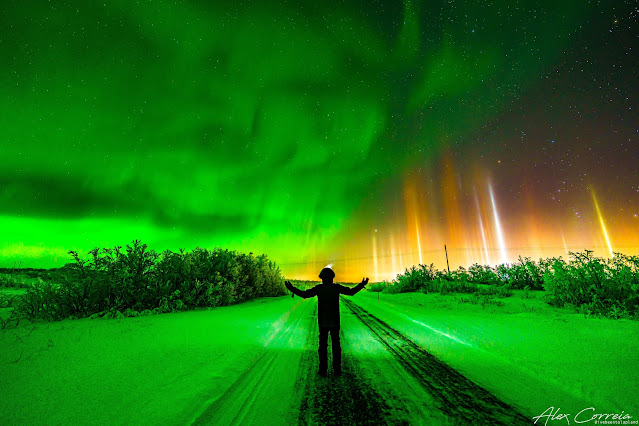SpaceX Starbase Flyover with Polaris Dawn Crew
Polaris Program will Undertake a Series of Pioneering SpaceX Dragon Missions, Demonstrating New Technologies and Culminating in the First Human Spaceflight on Starship
Led by tech entrepreneur and Inspiration4 commander Jared Isaacman, this program will advance deep space exploration while raising global awareness for St. Jude Children’s Research Hospital®.
Los Angeles, California (February 14, 2022) – Today Jared Isaacman, founder and CEO of Shift4 (NYSE: FOUR), announced the Polaris Program, a first-of-its-kind effort to rapidly advance human spaceflight capabilities, while continuing to raise funds and awareness for important causes here on Earth. The program will consist of up to three human spaceflight missions that will demonstrate new technologies, conduct extensive research, and ultimately culminate in the first flight of SpaceX’s Starship with humans on board.
The first mission, Polaris Dawn, is targeted for no earlier than the fourth quarter of this year and will be commanded by Isaacman, an accomplished pilot and astronaut who led Inspiration4, the world’s first all-civilian mission to orbit that helped raise over $240 million for St. Jude Children’s Research Hospital®.
“The Polaris Program is an important step in advancing human space exploration while helping to solve problems through the use of innovative technology here on Earth,” said Isaacman. “On Polaris Dawn, we endeavor to achieve the highest Earth orbit ever flown in addition to conducting the world’s first commercial spacewalk and testing of Starlink laser-based communication. Alongside these important objectives, we will be supporting scientific research to advance both human health interests on Earth and our understanding of human health during future long-duration spaceflights.” Building upon the Inspiration4 mission, Polaris Dawn will continue to raise funds and awareness for St. Jude Children’s Research Hospital®.
THE POLARIS DAWN MISSION
SpaceX’s Falcon 9 rocket will launch the Polaris Dawn mission from Launch Complex 39A at Kennedy Space Center in Florida. Dragon and the Polaris Dawn crew will spend up to five days in orbit, flying higher than any Dragon mission to date and endeavoring to reach the highest Earth orbit ever flown.
While in orbit, SpaceX mission control will carefully monitor Dragon and the crew as they: – Attempt the first-ever commercial spacewalk with SpaceX-designed extravehicular activity (EVA) spacesuits, upgraded from the current intravehicular (IVA) suit. The development of this suit and the execution of the EVA will be important steps toward a scalable design for spacesuits on future long-duration missions.
Become the first crew to test Starlink laser-based communications in space, providing valuable data for future space communications systems necessary for human spaceflight to the Moon, Mars, and beyond.
Conduct scientific research designed to advance both human health on Earth and our understanding of human health during future long-duration spaceflights. This includes, but is not limited to:
Using ultrasound to monitor, detect, and quantify venous gas emboli (VGE), contributing to studies on human prevalence to decompression sickness;
Gathering data on the radiation environment to better understand how space radiation affects human biological systems;
Providing biological samples towards multi-omics analyses for a long-term Biobank; and
Research related to Spaceflight Associated Neuro-Ocular Syndrome (SANS), which is a key risk to human health in long-duration spaceflight.
SpaceX and Polaris Dawn will also collaborate with the Translational Research Institute for Space Health (TRISH), BioServe Space Technologies at the University of Colorado Boulder, Space Technologies Lab at Embry Riddle Aeronautical University, Weill Cornell Medicine, Johns Hopkins University Applied Physics Laboratory, the Pacific Northwest National Laboratory, and the U.S. Air Force Academy.
Image Credit: Polaris Program/John Kraus
Caption Credit: Polaris Program
Image Date: February 11, 2022
#NASA #SpaceX #ElonMusk #Space #PolarisProgram #Polaris #Moon #Mars #Dragon #Starship #Spacecraft #SuperHeavy #Earth #Orbit #Spaceflight #Science #Technology #Engineering #Transportation #Commerce #BocaChica #Texas #Kennedy #KSC #Spaceport #CapeCanaveral #Florida #UnitedStates #STEM #Education








